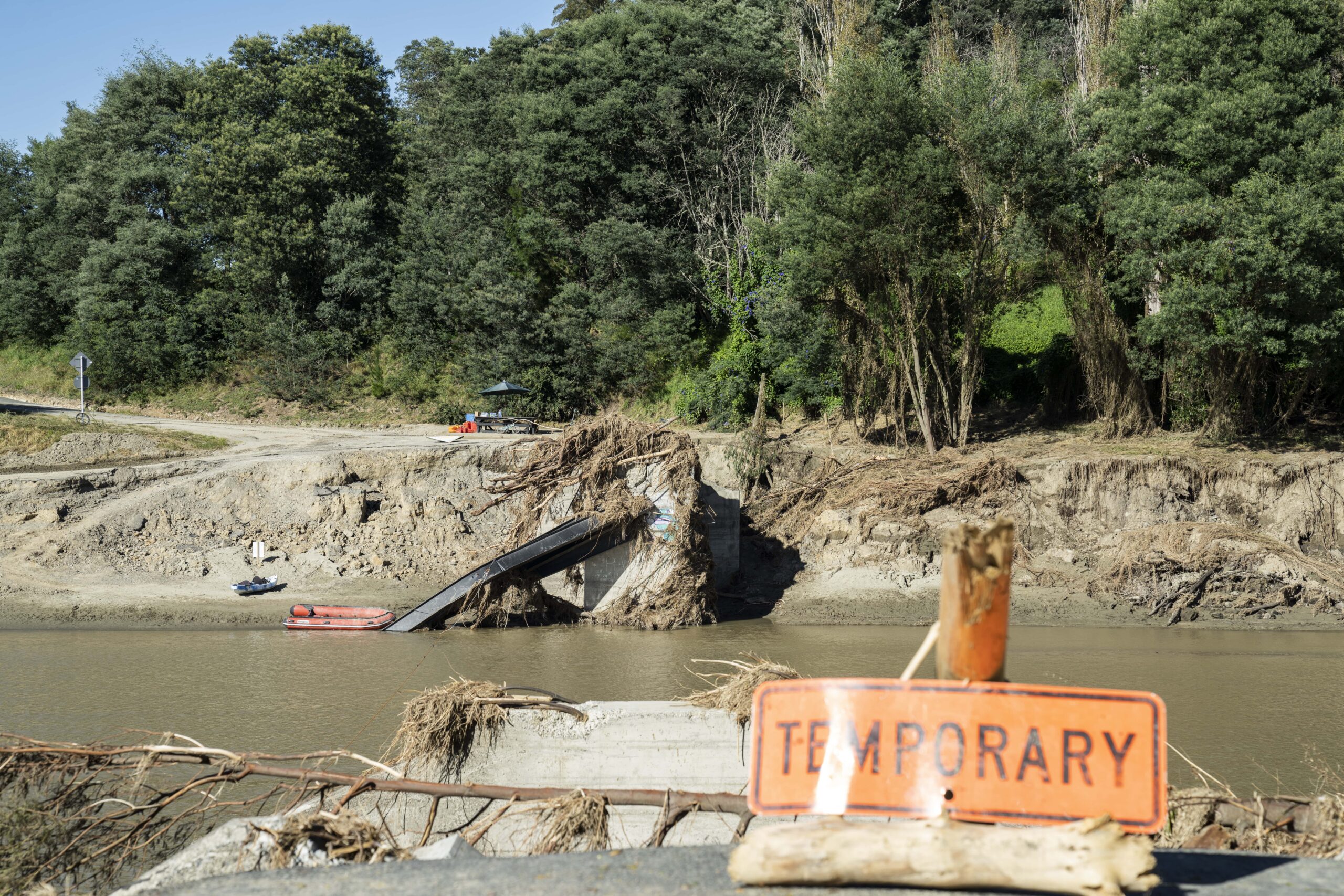The centre of cyclone Gabrielle stagnated to the east of Te Tara-O-Te-Ika-A-Māui (Coromandel Peninsula) during the night of February 13/14 which marked the most intense passage of rainfall for many regions, particularly Te Tairāwhiti (Gisborne) and Te Matau-a-Māui (Hawke’s Bay).
Rainfall rates exceeded 20 mm/hour for more than six hours across multiple high-elevation rain gauges in these regions, with the Kaweka, Maungaharuru, Raukumara Ranges of northern Te Matau-a-Māui witnessing particularly severe rainfall totals.
Some of the worst affected areas from this extreme rainfall event were communities with lifeline infrastructure (roads, bridges, water supplies) exposed to fluvial flooding at multiple locations. 225,000 homes were without energy during the peak of the storm, while the government has described Cyclone Gabrielle as a multi-billion dollar event with impacts comparable to the 2011 Waitaha (Canterbury) earthquakes.
To analyse whether and to what extent human-caused climate change altered the likelihood and intensity of this extreme rainfall, scientists from Aotearoa New Zealand, the Netherlands, Germany, the US and the UK used published, peer-reviewed methods to perform an event attribution study, focussing on the heavy rainfall associated with the most severe damages in Te Matau-a-Māui and Tairāwhiti, on the east coast of Te Ika-a-Māui, bounded by the Kaimanawa and Raukūmara mountain ranges on the west, and the south Pacific Ocean on the east, comparing the peak 48-hour rainfall during February 2023 with the highest 48-hour rainfall totals in past years.

Fig. 1: 2-day accumulated rainfall from Cyclone Gabrielle in the MSWEP data. The red highlight shows the study region- Te Matau-a-Māui/Te Tairāwhiti, on the east coast of Aotearoa New Zealand’s Te Ika-a-Māui.
Main findings
- The main damages in the study region (Te Matau-a-Māui and Te Tairāwhiti) from cyclone Gabrielle occurred as a consequence of the extreme rain that fell over two days while the cyclone stalled.
- Cyclone Gabrielle’s track and the potential for extreme rainfall and winds were well forecast with up to a week of lead time, allowing emergency services and the local population time to prepare. Preceding flooding over Tāmaki Makaurau (Auckland) two weeks earlier had raised awareness of the potential severity and impact of rainfall, and improved preparedness based on warnings. At the same time the antecedent rainfall likely also increased the likelihood of landslides.
- The mountainous nature of the study region means that most of the population lives in flood-prone valleys and coastal plains, and transport and communication infrastructure crosses exposed terrain.
- In individual locations across the region, events like these are rare, with return times ranging from 70 to 320 years. Averaged over the whole study area the return period is between 10 and 90 years.
- First, using the relationship between historical weather station data (1979-2023) and global mean temperature to extrapolate back to colder climates, we found that the 2-day maximum rainfall over Te Matau-a-Māui/Te Tairāwhiti region is now about 30% more intense than it might have been had human greenhouse gas emissions not warmed the climate by 1.2°C. This also means a rainfall event of this magnitude is now about four times more likely to happen than it was when the world was 1.2°C cooler than it is today.
- The increase in the observed records show what is expected from basic physics for heavy rainfall in a warming world. However, there are large uncertainties in these estimates due to the short period covered by their data and high variability in the region.
- To determine the role of human-induced climate change in these observed changes we also looked at the trends in climate models. The region is smaller than in most comparable attribution studies for climate models thus limiting the number of models with off-the-shelf data available that can plausibly simulate this type of event.
- The models that pass our evaluation test generally show a much smaller change in likelihood and intensity of extreme rainfall than we found in the historical weather station data. This discrepancy suggests that processes not captured by our model evaluation could play an important role. This means we cannot quantify the overall role of human-induced climate change.
- Looking at the future, for a climate 2°C warmer than in preindustrial times, models suggest that rainfall intensity will slightly increase, although the uncertainty remains large.
- The disagreement between model results and observations prevents us from concluding with certainty that human-induced climate change is the main driver making this event more likely. However, while multiple reasons could explain the absence of a trend in our model results, we have no alternative explanation for a trend in observations other than the expectation of heavy rainfall increasing in a warmer climate.
- It is therefore important to urgently reduce the exposure and vulnerability of communities to future flooding, particularly ensuring that lifeline infrastructure remains intact so communities can receive flood warnings and respond accordingly.





